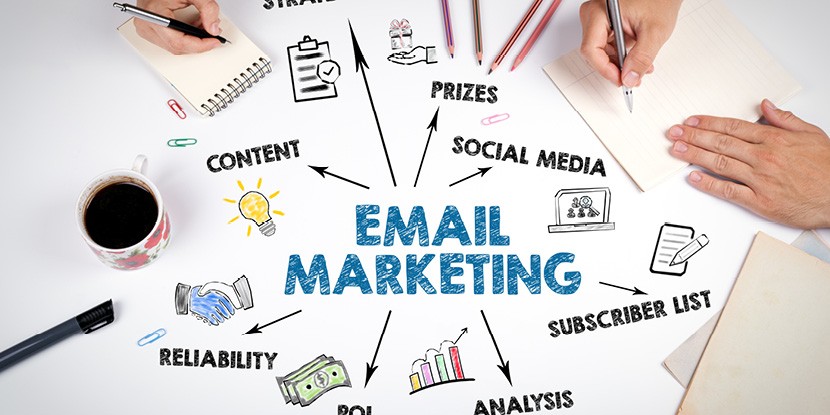More than ever before, consumers rely on other people rather than brands to guide their purchase decisions. This is why businesses using email marketing need to incorporate more social proof in their email campaigns. Using social proof such as testimonials and case studies is not only a great way to build brand trust and customer loyalty, but it also speeds up buying decisions.
Whether you’re new to email marketing or looking for new ideas, this guide looks at various ways to use social proof in your email marketing campaigns. First, let’s look at what social proof means.
What Is Social Proof?
The term “social proof” was coined by the psychologist Robert Cialdini in his 1984 book “Influence: The Psychology of Persuasion.” The social proof effect is based on the observation that people tend to “follow the wisdom of the crowd,” taking a particular action because they see others taking the same action. Most people just want to “fit in,” and copying the majority feels like the easiest way to make the right decision, especially when there are multiple choices.
Ultimately, using social proof in marketing is one of the most powerful ways to influence purchase decisions. Marketers have taken advantage of this psychological effect for years because consumers are more likely to make decisions based on what other consumers have done. This is why so many marketing messages use social proof such as testimonials and peer recommendations to persuade and earn the trust of potential customers.
Nine Ways to Incorporate Social Proof in Email Marketing Campaigns
Whether you want to add credibility to your welcome emails or make your discount emails more persuasive, here are nine easy ways to squeeze more social proof into your email campaigns:
- Use Specific Numbers
Inserting numbers into email copy can add instant visual impact. It also makes your messages sound more credible. For example: “Join 1,570 other happy customers in our loyalty program.” Consider using the following numbers as social proof:
- Product sales numbers.
- A statistic from a customer survey.
- The limited number of items left in stock.
- The number of email subscribers on your list.
- The number of new customers you gained in a given time period.
- Draw Attention to Popular Products
You don’t have to use numbers to show your products’ popularity; you can simply showcase your most sought-after products. For example: “Our best sellers this season…” or “Check out our customer favorites…”
- Include Reviews and Testimonials
According to a report from digital marketing company Tint, around 72 percent of consumers trust reviews and testimonials more than brand-created content (1).
When promoting a product or service in emails, always try to include social proof in the form of reviews and testimonials from satisfied customers. This will help to improve engagement and conversions, especially in emails such as abandoned cart emails and welcome emails. If possible, include customer photos. According to Emarketer, 62 percent of consumers are more likely to buy a product if they can see customer photos (2).
- Incorporate User-Generated Content (UGC)
According to a 2019 Stackla report, 79 percent of consumers said that UGC highly impacts their purchase decisions (3). What other types of UGC can you use besides reviews as social proof?
If your business, product, or service is mentioned in a third-party blog post, this counts as UGC. Social media images featuring your products, services, or employees can also be used as social proof. You can use social media listening tools to find content related to your brand. Remember that it’s your legal responsibility to ask permission before using other people’s content, and always credit the original content creator.
- Showcase Media Mentions
Generally, people tend to view media organizations as credible sources of information, which is why being mentioned on any media channel is a great form of social proof. Whether you get mentioned in a blog, local newspaper, podcast, or local magazine, make sure to tell your audience. This is especially important for smaller businesses that are less well known.
If you don’t have any media mentions yet, reach out to local reporters or bloggers in your industry and ask them to review one of your products.
- Share Case Studies
Case studies are a great way to convey the value of your products or services and show how you solve specific problems for people or companies. Case studies work well because they deal in facts. People also like to read about other people’s common challenges and how their problems were solved.
When you’re highlighting the benefits of your products or services within emails, consider including a link to one of your case studies.
- Highlight Expert Endorsements
If any industry expert recommends your business or one of your products, you need to make the most of it. Make sure your email subscribers know about it from the moment they sign up to build confidence in your brand.
- Show Awards and Certifications
If your company wins any awards or earns certifications, display them in emails to add credibility to your business and increase consumer trust. When people see awards and certifications, they instinctively believe a brand is more experienced and trustworthy.
- Add Social Proof to Your Email Signature
Optimizing your email signature is an easy way to strengthen the marketing power of your emails. You can include testimonials, mention awards, or feature other types of social proof. Consider including a link for readers that want to find out more.
Different team members and departments can also create unique email signatures using different types of social proof.
Improve Email Marketing Results with Social Proof
As more and more consumers seek authenticity from brands, using social proof has become an essential marketing technique for businesses across every industry. If your email marketing campaigns need a boost, the ideas outlined here are a good place to start.
As well as using social proof in the body of your email messages, try using it in email subject lines and email signup forms to increase engagement. The more you experiment, the more you’ll learn about what resonates with your unique audience.







